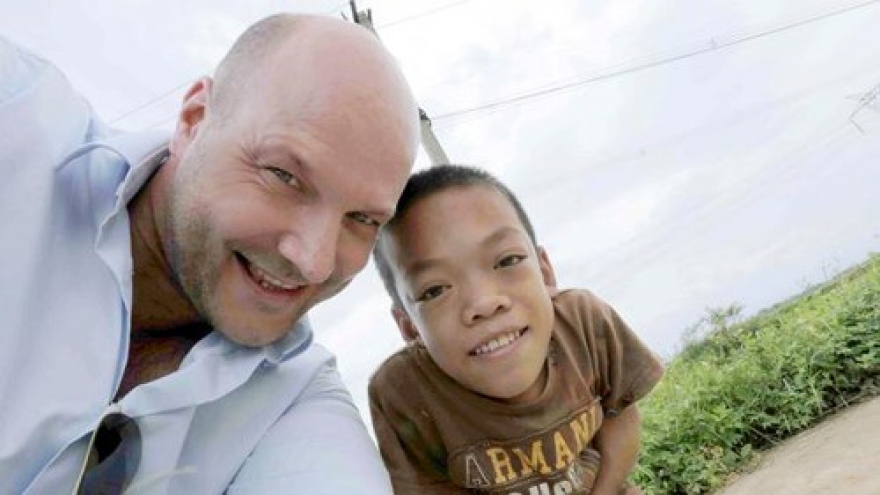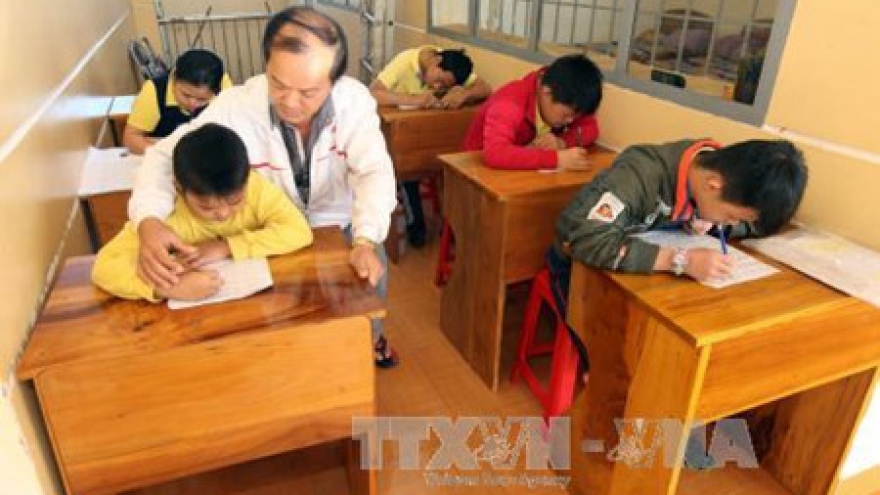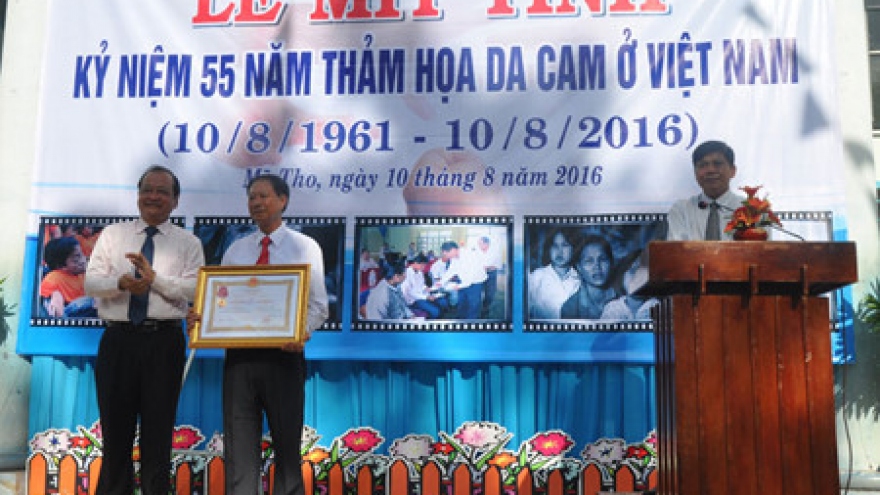Tran To Nga says “not alone” in AO/dioxin lawsuit
Vietnamese – French Tran To Nga said she was not alone in the lawsuit against 26 US chemical firms to demand justice for Agent Orange (AO)/dioxin victims, in an interview granted to the Vietnam News Agency on the sidelines of a meeting to mark the 55th anniversary of AO Day in Hanoi on August 10.
 |
In May 2014, the lawyers sent the petition to 26 US chemical companies, including Monsanto and Dow-Chemical, she said, adding that before the lawsuit began, the lawyers asked her whether she was prepared for a lengthy process with numerous difficulties.
In previous lawsuits by other AO victims, the two US companies had never accepted the suits as defendants, she said.
Six months after sending notification of the lawsuit to the US companies, 19 were present at the court and each hired two lawyers, she told reporters.
“This is the initial step and the fight for justice has just begun,” Nga said, adding that six hearings were held over the past year, just to deal with legal procedures.
Despites enormous setbacks, Nga said she has never been alone in this fight.
“Behind me are millions of AO/dioxin victims in Vietnam and other countries. If the court admits that I am an AO victim, this will create a premise for millions of other people exposed to this toxic chemical to fight and demand for protection of their rights and interests,” Nga said.
Apart from financial assistance from AO organisations in Vietnam’s Soc Trang and Bac Kan provinces, Nga said she also received support from locals in France and other countries.
The international workshop on AO/dioxin in Hanoi on August 8-9 also advocated Nga’s lawsuit.
However, Nga also shared a number of difficulties in the fight to protect AO/dioxin victims.
“For example, I was exposed to AO/dioxin in 1966-1970. At that time, I was a war reporter at the Liberation News Agency (now Vietnam News Agency). In the lawsuit, the defendant asked me to show my labour contract and salary payroll, which were unrealistic during wartime,” Nga said.
She added that if she could not meet the defendants’ requirements,they demanded she would have to compensate them US$200 each day. However, the court in France rejected these unreasonable requests, she noted.
She said she had visualised a lot of difficulties when pursuing this lawsuit.
“Last year, I had to undergo three surgeries but if I’m still strong, I will remain steadfast in this lawsuit,” Nga said, adding that the fight for justice is still very long and her descendents will continue with it.
“Most importantly, I have never felt lonely in this fight as people around the world have become increasingly aware of the consequences of AO/dioxin on Vietnamese people,” Nga said.
She added that she has launched a book, literally translated as “My contaminated land”, which was published in 2016 and received warm international response.
The 300-page book tells the life story Nga as an AO victim. It also records her journey to file a lawsuit against US chemical firms for producing chemical toxins sprayed by the US army in the war in Vietnam.
Nga said she is writing the Vietnamese version and will soon introduce it to the public.
In May 2014, Tran To Nga, 74, filed a lawsuit against 26 US chemical firms for producing chemical toxins sprayed by the US army in the war in Vietnam, causing serious consequences for the community, her and her children.
Between 1966 and 1970, she had to work and live in some of the most heavily AO/dioxin affected areas in southern Vietnam such as Cu Chi, Ben Cat and along the Ho Chi Minh Trail, ultimately experiencing the effects of contamination herself. Among her three children, the first child died of heart defects and the second suffers from a blood disease.
In 2009, Nga, who contracted a number of acute diseases, appeared as a witness at the Court of Public Opinion in Paris against the US chemical companies.
From 1961-1971, US troops sprayed more than 80 million litres of herbicides - 44 million litres of which were AO, containing nearly 370 kilograms of dioxin - over southern Vietnam.
As a result, around 4.8 million Vietnamese were exposed to the toxic chemical. Many of the victims have died, while millions of their descendants are living with deformities and diseases as a direct result of the chemical’s effects.-



